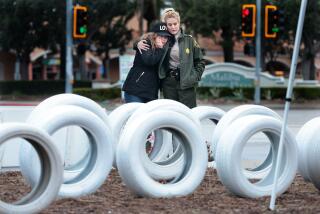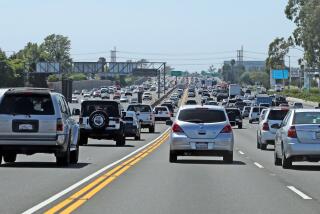Doctoring the Speeding Law
- Share via
The California Medical Assn. has a new take on an old law. It seems the law allows doctors to speed to medical emergencies under certain conditions. Remember, this goes back at least half a century, before driver’s seats resembled cockpits and new car models required wind-tunnel tests.
Then, doctors had a silly notion that it was easier for a healthy health-caregiver to carry a little black medical bag to a sick person’s home than making the ill one get dressed to travel to the doctor’s office to share their misery and germs in public with other sick people for an hour after the assigned appointment. Those home visits were called house calls. Science, of course, has moved on since then with incredible medical discoveries. One is that doctors don’t get paid for travel time. They can see more bills, uh, people at the office, and it costs doctors nothing to have customers practice what they’re called: “patients.” Today, you need to be a sick horse for a doctor to visit your stall.
Still the CMA, representing a third of California doctors, will sell red “M.D.” bumper stickers to quicken response times to emergencies, not to 5 p.m. tee times and not to fetch takeout and a nice Merlot. This way summoned doctors can move somewhat faster along country roads or city streets, following all other traffic laws and signs. The stickers were designed jointly by the CMA and a cautious California Highway Patrol. How many minutes do you figure now until counterfeit “M.D.” stickers go on sale? Within days, pretty much every L.A. driver would appear to be a doctor.
Naturally, the CHP had concerns over condoning any speeding. The CHP chief, D.O. “Spike” Helmick, wants no Keystone Kops street scenes from a time of horses and streetcars, and says he’d personally write speeding tickets for anyone, doctor or no. Most doctors, even surgeons, would probably obey a cop nicknamed Spike wearing Kevlar and carrying a 9-millimeter.
Just in case, here’s how to handle any too-quick docs: All doctors who violate the new interpretation of the old law get summoned for a police stationhouse call to a waiting room full of other speed miscreants. There, they listen to the fish tank, watch muted foreign soaps and read stale issues of Guns & Ammo with the Viagra coupons torn out. At least 60 minutes -- maybe 90 -- after their appointment, medical speeders would be ushered into an examiner’s room, given a gown with no back and told, “The officer will be here shortly.” For, oh, 20 to 25 minutes more the quick and the bored stare at the plastic heart and human skeletal chart before anyone appears. Immediately, that officer will say he’s in the wrong room and depart. You know, those lawmakers knew a little about justice after all.






